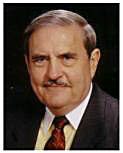Think About It
“Give me control of a nation’s money and I care not who makes the laws,” a quote attributed to Meyer Amschel Rothschild, founder of the European banking dynasty. To see how banking developed, we need to go back beyond the birth of Jesus Christ. As civilization developed, feudal lords, or seigniors, were the first to assert power over others who became their serfs. At that time, all commodity production was generally kept within the seigniorial domains. About 586 bc, Nebuchadnezzar of Babylon conquered Judah, and as a result the Jewish inhabitants were dispersed throughout the world. This became known as the diaspora, and 11 of the 12 tribes of Israel were said to have lost their identity as they assimilated.
By the time of Christ, import of Oriental goods: spices, silk, etc., was making its way into the Middle East, and eventually Western Europe. By the middle ages, the Orient was interested in acquiring English woolen, Venetian salt, copper from Belgium, etc. The original initiative in this trade belonged to the Jews of the diaspora, who became major traders. But as local economies gradually developed, so did the growth of local artisans, the first middle class. This economic development eventually destroyed the commercial function of the Jews, as the artisans began to do their own trading. By the time of the Crusades, the will of the Christians to carve their own road to the Orient, led to persecution of both Jews and Muslims. As the artisans developed guilds to foster their crafts, they excluded Jews from membership. Old Testament law prohibits a Jew from lending to another Jew with interest, but it does not prohibit lending to a gentile with interest. Thus many of the Jews, excluded from trading and artisanship, became lenders of money. They loaned to Lords for luxuries and war; they loaned to artisans and peasants to pay their taxes and rents. The rates were extremely high.
In 1743, Amschel Moses Bauer, father of the author quoted above, was a goldsmith in Frankfurt, Germany. By now the Jews had developed their own guilds for their artisans. His sign was a Roman eagle on a red shield. The German word for red shield is “Rothschild”, and he eventually changed his surname. Goldsmiths kept other peoples gold in more secure surroundings. They issued the owners gold receipts which became useful as a substitute for gold, and people soon accepted them as currency. Then, the goldsmiths realized they could rather safely “lend” gold receipts at interest for more gold than they had on hand, and fractional reserve banking was begun.
Meyer Rothschild was an even greater financial intellect than his father, and he in turn had 5 sons, who he instructed in the secret techniques of money creation and manipulation. His son, Amschel II, was to stay in Frankfurt; but he sent the other 4 to the financial capitals in Vienna, London, Naples and Paris. They learned they could be successful by lending to both sides carrying on a common war, and they learned that prior knowledge of breaking world conditions could help make a fortune. Thus, they developed an intelligence network long before our CIA.
In 1815, Napoleon wanted to control Europe. Only British commander Wellington stood in his way, at Waterloo, in Belgium. Meyer’s son, Nathan, ran the London banking operations. He had loaned enormous amounts to Britain, backed by their bonds. If Napoleon won, they were worthless. But his spy rushed to him with the knowledge that Wellington would win. When the exchange opened, Nathan nodded to his trader to sell English bonds. “He knows,” other traders began to shout, “Wellington has lost.” Shortly a half million in bonds was dumped onto the market, with prices falling down to 5% of worth. Suddenly, Rothschild began to buy bonds, and before his colleagues realized their duping, Rothschild had increased his wealth 20 fold, buying English bonds back at 5 cents on the dollar.
Tuesday, March 11, 2008
Subscribe to:
Post Comments (Atom)

No comments:
Post a Comment